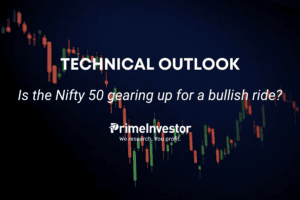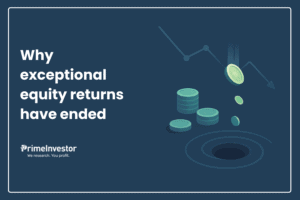If you are a growth subscriber, you will have access to Prime Stocks – which is a list of stock recommendations. When stocks in the list move up in price and it is still in our buy list, many of you have problem identifying the buy price at which you should invest.

This is primarily because stocks we recommended may not be available for buying at the same at price at which we recommended. Some of the stocks might have moved higher from our recommended price and may be trading even closer to their 52-week highs while some others may be trading lower than our recommended price.
Before discussing further on how you can get over your dilemma on whether you are buying at a higher price, there are a few things you need to understand. So, let us briefly explain our approach to stock recommendations and the classification of stocks under 3 buckets – buy, hold and sell.
Recommendation categories
#1 Return categories
We have bucketed the stocks into “FIVE” return categories – High growth, compounders, early movers, tactical buys and dividend earners. These are nothing but classifications that help you identify the potential risk reward in each stock and their suitability for you. Compounders for example, return steadily over a period of time, while tactical buys can be short to medium term opportunities or those that require timing. We have provided the explanation for each of these in their respective tab as you can see in this link.
#2 Risk categories
There are “TWO” risk categories – moderate and high.
To elaborate on this, a “high growth” stock with “high” risk is the one where you may see high returns accompanied by high volatility as well. On the other hand, a “compounder” with “moderate” risk is where you may get decent returns with lesser amount of risk.
These two combinations fall at the two extremes of the risk-return spectrum.
How we move stocks across buy, hold, sell
Whenever we initiate a “buy” call, the stock is added in our buy list under appropriate categories based on its “risk” and “return” characteristics. So long as a stock is in the buy list, it qualifies for a buy irrespective of the deviation from our recommended price.
On the other hand, whenever we feel that the return potential from a certain price is not that high at the current price (in other words the stock has run up significantly and is closer to being fully priced in) we may move the stock to “hold”. In the past, we have moved stocks like IRCTC, Bajaj Holdings and Asahi India glass to hold after meaningful appreciation wherein we believe it may not be attractive for a fresh buyer considering the risk-reward from current entry price.
The final one is the “sell” call where we will initiate it whenever we believe that the stock has achieved its return potential or in the case of an uncertainty or adverse circumstance. We may initiate a sell on stocks with losses too if we realize our thesis is not playing out as expected or fresh risks stymie the return potential significantly.
Recently, we initiated sell/exit call on Coromandel International following a government initiative that discourages private sector fertilizer players from branding thus stymieing growth.
How you should approach our recommendations
Let us now go the two repeated queries we receive on the price levels of the stock we recommend.
#1 Stock near 52-week high
Sometimes our recommended stocks may have moved up post recommendation and may be near their 52-week highs. This may happen due to several reasons:
- Part of a sector that is in limelight in the market: Stocks in the retail space or capital goods space have been nearing or hitting their 52-week highs, as both consumption and capex are in the limelight now. When sectors turnaround, they often move to a new trajectory quickly, supported by growth (see next point). Hence, past prices that are surpassed may not be relevant as an indicator of whether the stock is pricey. With Prime Stocks, therefore, 52-week high is not a criterion to decide whether the stock should be a buy or not.
- Showcasing robust earnings growth: The banking sector has been in the spotlight as the bottoming out of NPA cycle led to robust earnings growth for banks across board, especially large ones. The sector has come out of a 5 year down-cycle in earnings while the up-cycle has started only a year ago. Every new cycle may last for many years before it peak out and stocks may continue to hit new 52-week highs during this period. Here again, past prices therefore become irrelevant.
- Valuation re-rating happening in the stock or sector: After we recommended Bajaj Holdings in May 2021, the stock a hit new 52-week high every month for the next 6 months. There was a re-rating happening in the stock as the deep discount to its holding value narrowed eventually. So investors who entered the stock at a later stage also made adequate returns.
To sum up, as long as a stock is in our buy list, it indicates that we have a positive view on the stock and its potential to generate returns. In case the return potential diminishes, we will move the stock to “hold” or even a “sell” after alerting all our Prime Growth subscribers.
#2 Stock trading below recommended price
In this case, it is an easy call to buy the stock as it is available below the recommended price. But buying only those stocks that are trading below recommended price is not an advisable strategy because you may be missing out on the stocks that are going up due to reasons explained in the previous point. By doing so, you may end up holding only the laggards. While we may hold to our conviction that these stocks will deliver, the fact that they are not favoured by the market makes them short to medium term underperformers. Holding a portfolio entirely made of such stocks can therefore pull down portfolio returns.
So, our advice is to buy a mix of stocks that have rallied as well. If you have a mental block buying the rallied stocks, start with lower investments in them rather than completely avoiding them. This will ensure a healthy mix of portfolio at all times.
What you should not do with our recommendations
#1 Sticking to losers where we have issued a sell call
Whenever we initiate a sell call at a loss, we are aware that you will be exiting with such losses. We therefore take such calls in extreme cases where we don’t believe in a recovery is possible in the medium term. In such cases, we would recommend that you move forward by booking the loss rather than sticking to the loser. Do remember, no portfolio – whether individual stock portfolio or a mutual fund or a PMS portfolio gets all the call in the green zone!
In the past, we had initiated a sell call on Tata Steel Long products where not only our initial assumption had changed, but the standalone existence of the company also came into question. Our fear proved to be right after Tata Steel announced absorbing all its group companies in this segment within its fold.
#2 Steadily averaging stocks on the downside without our average call
If you hold stocks that are below our recommended price, do not keep averaging without our average call. We may be waiting for some confirmation (results, con calls, corporate actions, shareholding, etc.) to initiate our average call rather than just a price decline.
Sometimes, uncertainties may prevent us from initiating an average call despite sharp decline in prices like the case of Equitas SFB. With management change still acting as an overhang, we have to take a wait and watch approach.
While the markets price in only negative news, it is possible that a new CEO brings in positive surprise to the stock as well. But the market may provide entry opportunities post such a positive change and it may be prudent to up your allocations later.
Taking a portfolio approach? Here are valuable tips for you
Prime Stocks is a list of stocks from which you can take your pick. It is not a portfolio. Since we do not have access to your own portfolio, we are not well placed to tell you whether your portfolio needs more of a particular sector or whether you should own a stock that is high risk. You are best placed to take that decision.
But if you are taking a portfolio approach using our prime stocks, here are some valuable tips through a series of articles written by Aarati Krishnan. These 5 articles can serve as a guide in designing your portfolio, fixing your allocation, booking profits and dealing with loss making stocks.
- Building a stock portfolio - 5 steps to getting it right (primeinvestor.in)
- Building a stock portfolio - 14 good questions, 14 great answers (primeinvestor.in)
- 5 ways to book profits on your stock portfolio (primeinvestor.in)
- How to deal with loss-making stocks : 4 useful options to consider (primeinvestor.in)
- Stock investing and the boiling frog syndrome - PrimeInvestor







12 thoughts on “How to time your entry into our stock recommendations”
Why not give a price range to buy (or sell ) at and update until appropriate. That way it would be easier for an invested to act. It need not be one price creating this ambiguity. Will also help those subscribers who may not have read this article.
When we have a long term view, we possibly cannot give a price range. Brokerages give a price range because their calls last for few weeks to months 🙂 We set valuation range internally of course but change it when developments happen. We cannot risk a disclosure as an investor would make it a cookie cutter approach to investing.
The points of buying stocks which are in ‘buy’ basket contradicts with point of not averaging stocks that are losers.
What would you recommend someone who is trying to build his equity portfolio and does not have a lot of initial capital to invest in lumpson and so is investing in a SIP based approach on all stocks that are in “Buy” zone.?
I know you have previously highlighted that lumpson investments are better than SIP in terms of stocks but how does that work for someone who is looking to build a position over a long time.
First, we did not say don’t average losers. we said, don’t do THAT alone. And please ntoe that we give average calls on stocks that fall steeply, provided we think it is the right level to buy and there are no concerns emerging.
If you want to build position over time, it is simple. Please don’t do that 1000 or Rs 2000 SIPs. Accumulate them and deploy them on market falls. I have done that for over 20 years now starting with very small savings. It works 🙂 That is the only way t build wealth in stocks. Stock SIPs are features pushed by brokerages to ensure you transact more often. We see no merit in it. Our calculator here will help you understand how SIPs don’t deliver. There is a sigificant difference in lumpsum vs SIPs unlike mutual funds. Mutual funds is a basket of stocks where price even out each other and hence the averaging process can work slowly. In stocks price movements are fast and SIPs cannot capture them.
Vidya
Thank you so much for your detailed response. This gives a lot of clarity and some confidence that we can build a corpus with disciplined investing over time.
Please clarify, what is the steep definition according to you – 10% fall or more than 20% fall from the buy call? sometimes it creates a confusion should I wait for your averaging call for a stock which has fallen say more than 10% or should I deploy the 2nd tranche without your averaging call for the stock which has fallen?
For us, it is valuation fall and not stock price fall. For a largecap 10-15% is good enough but for a midcap even a 20-30% is acceptable. Much would depend on the fall. We usually give averaging call when we think it is warranted. However, you can use the above as a broad metrics based on whether the stock is a mid or large cap. Vidya
Thank you for another good article …. where can we see in one place the consolidated Annual CAGR recommendation of all your stocks? if it is not available then it is difficult to measure your recommendations performance …. could you pls clarify?
Not sure I understood the question right. If you mean all of them in one place, unfortunately our present design allows you to see it only stock wise – you can click more details to see the return of the stock and the index. If you mean as a portfolio. Prime stocks is a list of stocks. Not a portfolio. We do not also recommend it as a portfolio. Hence, we do not show a CAGR, unlike our smallcases where we have CAGRs. We do an annual performance review where we do an average of those returns. thanks, Vidya
We need to see in one place the consolidated Annual CAGR recommendation of all your stocks… if it is not available then it is difficult to measure your recommendations performance on a real time basis. Yes we see and review it annually ….. Other stock advisory services provide this as matter of transparency and easy to measure the performance of their recommendations …. please consider adding this important feature to your website …..
Hello Sir, let me try and understand what you are saying. We are transparent in terms of mentioning not just each stock return but also its index returns in the website itself in each stock column. It is available when you click more details.
Are you asking for 1. Portfolio returns of all the stocks? Or 2. Showing individual stock recommendations together in one place? If it is former, you need to be aware that we are NOT OFFERING it as a portfolio. When we don’t, showing portfolio returns would make it a portfolio and therefore a different product regulatorily. We do not wish to do that. What other players showcase would be based on what product they offer. A portfolio ot individual stock. If you mean you wish to see a list of all stock returns in one place. it is available in Prime stocks page but agree that it is not in a way that is easily comparable. We will however take that as a reco. to our tech design. thanks, Vidya
Thank you Vidya for all the timely responses … Yes. I am not looking for any portofolio of stocks …. Just a easy and simple way of finding all your price performance of your stock recommendations in one place ….
Comments are closed.